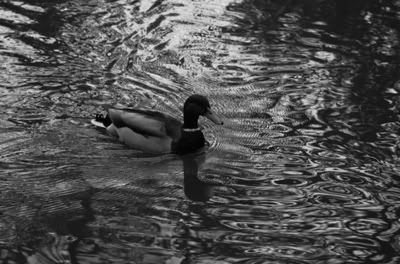Teji being "special grade", this tiebing [iron-pressed cake] is £24 and £30 at Yunnan Sourcing and Dragon Teahouse, respectively. 2003 was the first year that Xiaguan produced "Teji"-brand tuocha, and this cake is made from the same (2002 spring) leaves. Thanks to TA for kindly providing the sample.

The leaves are "believably Xiaguan", being consistently tiny (seen below). They have little aroma, but have the red/orange colour of proper age, rather than the curious green darkness that one finds in some more recent cakes. Stems and "yellow leaves" abound, Xiaguan teas are ne'er too pretty.

What really counts is what happens in the pot, of course, and Xiaguan are often no slouches in this area. The colour in the gongdaobei [fairness cup] is orange, but when poured into the cup, it has a green tinge. The gongdaobei colour is dominated by the major component of the colour, I reckon, while the cup contains a thinner brew and allows a different assessment of the colour.
This tea is very, very familiar. It reminds me of the endless Assam / Nilgiri blends that form the majority of teas consumed in England. The bran flavour and astringent character of Assam are present in abundance - maybe this would, dare I say it, benefit from the addition of milk.

I change pots, from my regular 12cl shengpu pot down to an 8cl version, making for a much lower water:leaf ratio. This benefits the tea, with some improved sweetness on top of that bran flavour.
The result in all brewing configurations that I tried was, however, still rather ordinary. I am naturally biased against Assam-style blends, so perhaps this could prove more interesting to those that enjoy such styles. Not one for my collection, let's say.

The leaves are "believably Xiaguan", being consistently tiny (seen below). They have little aroma, but have the red/orange colour of proper age, rather than the curious green darkness that one finds in some more recent cakes. Stems and "yellow leaves" abound, Xiaguan teas are ne'er too pretty.

What really counts is what happens in the pot, of course, and Xiaguan are often no slouches in this area. The colour in the gongdaobei [fairness cup] is orange, but when poured into the cup, it has a green tinge. The gongdaobei colour is dominated by the major component of the colour, I reckon, while the cup contains a thinner brew and allows a different assessment of the colour.
This tea is very, very familiar. It reminds me of the endless Assam / Nilgiri blends that form the majority of teas consumed in England. The bran flavour and astringent character of Assam are present in abundance - maybe this would, dare I say it, benefit from the addition of milk.

I change pots, from my regular 12cl shengpu pot down to an 8cl version, making for a much lower water:leaf ratio. This benefits the tea, with some improved sweetness on top of that bran flavour.
The result in all brewing configurations that I tried was, however, still rather ordinary. I am naturally biased against Assam-style blends, so perhaps this could prove more interesting to those that enjoy such styles. Not one for my collection, let's say.
(Updates made to 2003 Keyixing "Yiwu Zhengshan" and 2006 Yibang Chamasi "Gedebao".)

Hobbes,
ReplyDeleteHello, I am very glad that you agree with me,and I guess your wife must have the same temperament with Oolong tea.It seems you also like Puer of the old tea plants,the same as me. Which kind is your favourate? I prefer Yiwu's.
A bit expensive for a thinly disguised: Hot Milk (red)Tea. john
ReplyDeleteDear Yuffee,
ReplyDeleteYou know, I'm not overly loyal to any one particular variety of pu'er - as long as it's rich, interesting, stimulating, calming, acidic, smooth, aromatic, energetic, and preferably less than $10 for a bing. I'm not a fussy man. :)
Dear John,
ST recently said that he and his friends encountered a fake version of this tea - this one didn't seem offensively bad, as are most fakes, so I suspect that I'm drinking the real Teji. Just as you say, it's not the best deal in the world. ;)
Toodlepip both,
Hobbes